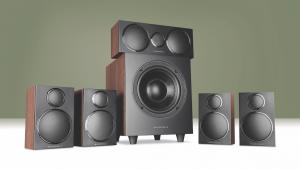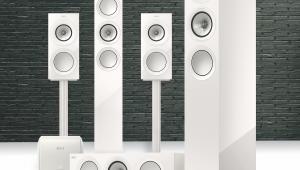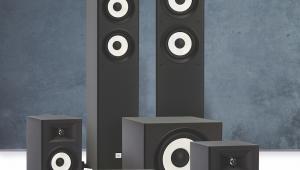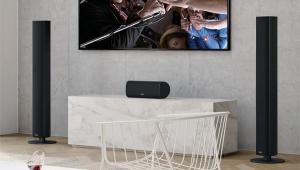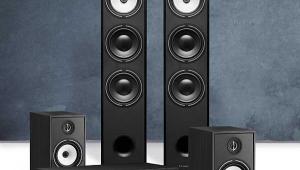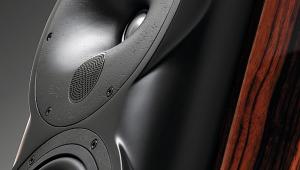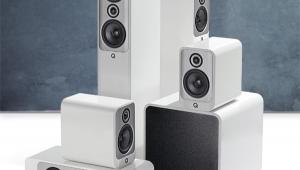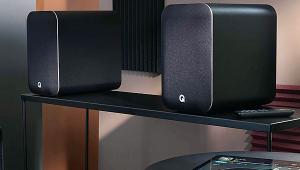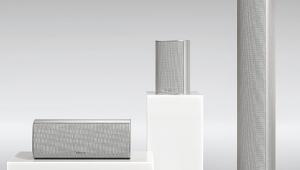Pioneer S-71 Series review

Pioneer’s efforts as a speaker manufacturer can often be overlooked in favour of its more widely recognised efforts in electronics and the great – if doomed – Kuro plasma project. Despite this, the Japanese giant has produced a number of interesting designs over the years and, in both construction and performance, its high-end TAD models are on par with most rival high-end speakers. Some of this thinking has been making its way down to less rarefied price points and more than a bit of it can be found inside the S-71 series tested here.
Back to BlackThis sextet comprises a pair of the S-71 floorstanders, another pair of S-71B standmounts as surrounds, the S-71C centre speaker and the S-71W subwoofer. All arrived for review finished in satin black, which appears to be making some headway over gloss in being ‘the new black’, but when covering something as large as the S-71 centre, can be slightly austere. In a modern apartment these speakers will look superb, but they can dominate more traditional surroundings. Fit and finish is absolutely top notch, however. Rapping your knuckles on the cabinets will result in little in the way of resonance. You can spend a lot more money for less solid construction than this.
The key design feature of the S-71 models is the use of a concentric driver arrangement with a titanium tweeter centred in a 5in woven cone. Concentric drivers offer some useful advantages over separate midbass and tweeter enclosures. The dispersion of sound from a single point is wider than a conventional design and is virtually identical for both drivers. This usually results in a larger listening ‘sweet spot’. At the same time, the number of holes that need to be cut into the cabinets (thereby compromising their rigidity) is reduced. All five speakers employed in surround duties make use of the same concentric arrangement, which should make the handover between speakers as smooth as possible. The S-71C centre makes do with a single concentric driver, which means it will generally be working fairly hard but with good dispersion, nonetheless.
The S-71 floorstanders also employ a horn-loaded bass port at the base of each tower. This allows for more accurate tuning than a more conventional ‘tube’ port and helps avoid the ‘honking’ that can result at certain frequencies. This is partnered with what Pioneer describes as ‘ABD/AFAST standing wave control technologies’, which work to control and break up standing waves inside the cabinet to further clean up low-end response. Finally, a wide lower plate with five spikes ensures that the relatively tall and thin design is likely to stay upright unless knocked very hard indeed.
The S 71W subwoofer is less technology-packed than the rest of the speakers and with all the controls hidden out of sight on the rear panel, is more fiddly to setup and install than any of them. Nevertheless, the 160W amplifier, stout 10in downward-firing driver and the same solid construction as the other speakers mean it looks and feels good value for money. Placement proved simple enough with no unpleasant room interaction from either a mid wall or corner setting.
Wired up and running with a Yamaha RX-V3900, the S-71s demonstrated some very distinctive qualities from the outset. These are extremely insightful loudspeakers, capable of extracting a huge amount of detail from soundtracks without sounding forced or unnatural. Equally, they can be pushed very hard without excessive harshness. Muffled conversations are relayed with absolute clarity and dialogue stays intelligible while all hell breaks loose elsewhere. So the collected wisdom of Stallone, Statham, Lee and Lundgren in The Expendables is not lost in the almost constant gunfire at any point. The single driver S-71C manages to hold the soundstage between left and right together extremely well and there is little sense of it being overwhelmed, even during manic moments on screen.
Top scoresThe tonality on offer is also of a very high standard. In the sparse but immersive soundtrack of Moon, the S-71s reproduce the haunting, slightly off-key quality of the signature piano motif perfectly with a real sense of presence and decay to the notes. Film scores with large string sections are equally well dealt with and there is none of the slightly synthetic and scratchy quality that massed violins can occasionally provoke, especially in poorly sorted metal tweeters.
As might be expected from the consistent use of the same concentric driver, the handover between speakers is smooth and relatively seamless. That said, in many setups, the considerable height difference between the tweeter in the centre and the floorstanders will become apparent during very fast panning of an effect from one side of the room to another.
The only small fly in the ointment is the S-71W subwoofer. Far from a poor design, it stays clean and relatively quick throughout the frequency range, but finds itself short of grunt partnering the floorstanders. Pioneer quotes a lower frequency response of 30Hz for the S-71s and, while this will be at a substantially lower output than higher frequencies, in a real world situation they are producing a more than reasonable output down to 50Hz or so. The S-71W does not stamp the same authority on the lower bass after this point and it lacks the extremely taught and agile quality that the trick horn-loaded port gives the S-71.
In a system where the S-71B surrounds are used for front as well as rear duties, the S-71W would make much more sense but with the floorstanders, a more muscular performer in the bottom 50Hz would make a positive improvement.
Tuning upMusically, the S-71s also put in a respectable performance in stereo. The same strong tonality helps vocals and instruments to shine and the soundstage is wide and even.
The bass response is also impressive with a good ‘in-the-diaphram’ feel to kick drums and the like. The timing and sense of rhythm is bettered by some other similarly-priced designs, but few of those go on to combine the same insight and delicacy that the S-71s can generate.
They certainly have a great deal to recommend them. The clever technology works to deliver an immersive listen and they can handle complex and cluttered soundtracks with ease. The superb build and finish should ensure they last a good few amp updates to boot. In a perfect world, I would prefer a gloss black or a wood veneer option, and I would be inclined to ask my dealer nicely if I could at least demo with some other subwoofers, but the S-71 series is a ‘must audition’ for anyone looking for a set of speakers with real clarity and refinement.
HCC VERDICT
Highs: Detailed and immersive sound with excellent soundstage
Lows: Subwoofer not up to the standard of the passive speakers; satin black looks a bit severe
Performance: 4/5
Design: 3/5
Features: 4/5
Overall: 4/5
Specifications
S71 Floorstanding loudspeaker
Drive Units: 2 x 5in Aramid cone bass drivers, 1 x 5in Aramid concentric midrange with centrally mounted 1in Titanium concentric tweeter
Enclosure: Horn-loaded lower port
Frequency Response: 33-50kHz
Sensitivity: 85dB
Power Handling: 130W
Dimensions: 260(w) x 1,114(h) x 246(d)mm
Weight: 23.8kg
S71B Standmount surround speaker
Drive Units: 1 x 5in Aramid concentric midrange with centrally mounted 1in Titanium concentric tweeter
Enclosure: Twin-tuned rear port
Frequency Response: 43-50kHz
Sensitivity: 83dB
Power Handling: 130W
Dimensions: 181(w) x 300(h) x 276(d)mm
Weight: 6.1kg
S71C Centre loudspeaker
Drive Units: 1 x 5in Aramid concentric midrange with centrally mounted 1in Titanium concentric tweeter
Enclosure: Tuned rear port
Frequency Response: 43-50kHz
Sensitivity: 83dB
Power Handling:130W
Dimensions: 400(w) x 188(h) x 256(d)mm
Weight: 7kg
S71W subwoofer
Drive Unit: 10in long-throw downward firing
Enclosure: Ported
Frequency Response: 26Hz-1kHz
On board power: 130W
Dimensions: 372(w) x 394(h) x 256(d)mm
Weight: 19.3kg
 |
Home Cinema Choice #351 is on sale now, featuring: Samsung S95D flagship OLED TV; Ascendo loudspeakers; Pioneer VSA-LX805 AV receiver; UST projector roundup; 2024’s summer movies; Conan 4K; and more
|




